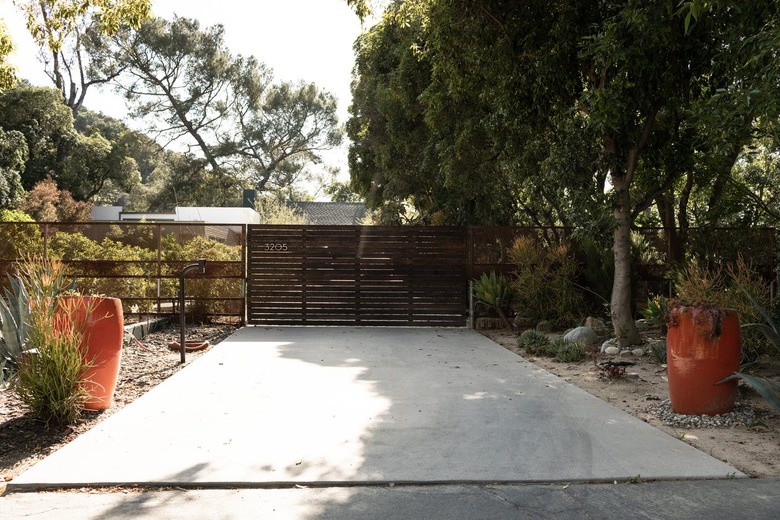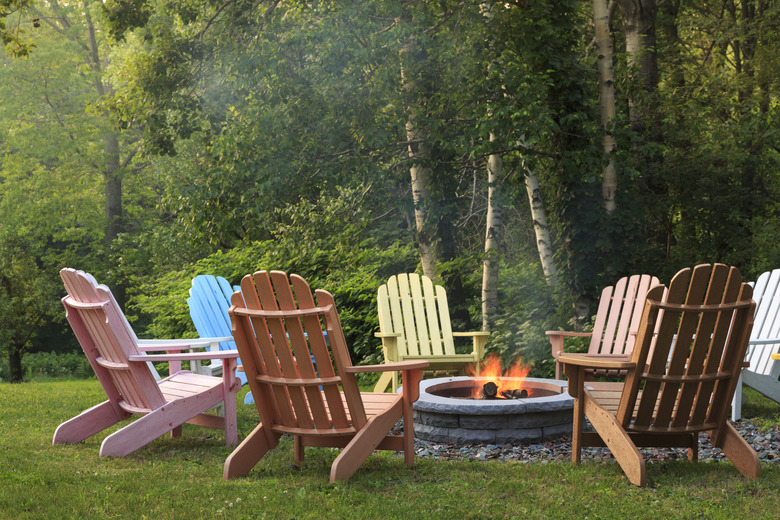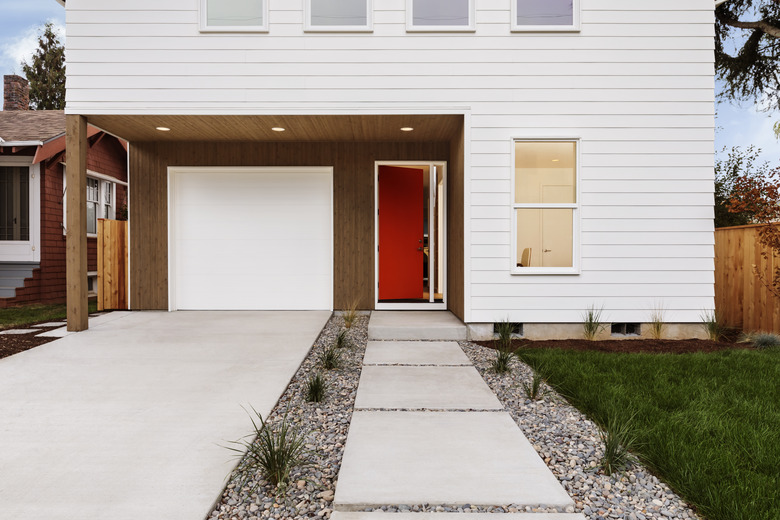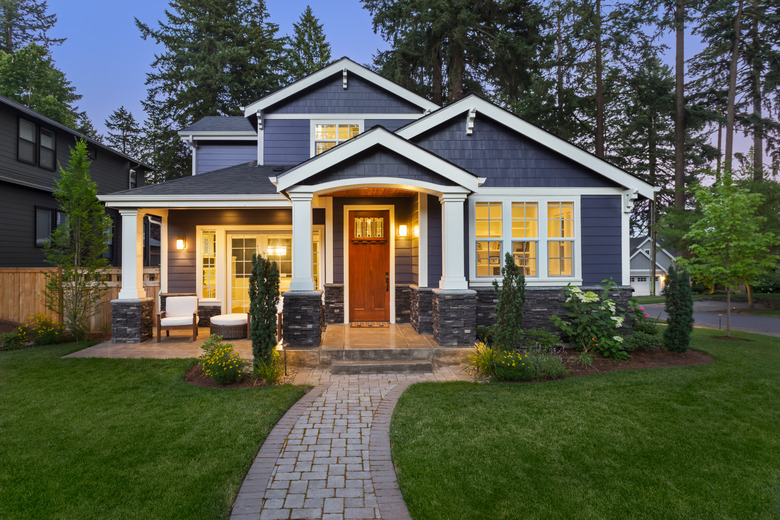10 Steps To Landscape Design: A DIY Homeowner's Guide
We may receive a commission on purchases made from links.
If your home is your castle, your landscape includes everything outside the walls but inside the moat. For a homeowner, the idea of creating a landscape design from scratch can be challenging, but it's a wonderful opportunity to be creative, keeping in mind the principles of unity, balance, proportion, and diversity.
The key to moving gracefully into your own landscape design project is to take one step at a time down the path toward a master plan. You assess what you have to work with and define your outdoor goals, figuring out what you want to do in your yard and how to include those elements with budget and maintenance in mind.
1. Assess What You Have
1. Assess What You Have
When you act as your own landscape designer, you are not coming up with design ideas in the abstract. You start with a defined amount of land (front yard, side yards, and backyard) and some permanent elements already in place that must be part of a final plan. Save yourself time and effort by mapping out where you are and what you have to work with at the very beginning of the project.
Draw a map of your home and yard to scale and then add in anything that impacts your landscaping plan. This should include trees, slopes, rivers and streams, and other natural features present on the property as well as other structures and any hardscaping (like the driveway or sidewalks).
You should also note on the map the sun exposure for different areas, including full-sun spots, dappled shade, and deep shade as well as any boggy, marshy, or rocky areas. Pencil in areas with potential privacy issues. This will help you later as you select plants and large shrubs as part of the landscaping design. Make several copies of the map since it will come in handy.
2. List Your Outdoor Space Activities
2. List Your Outdoor Space Activities
No two households are alike. That's why, according to Gilmour, design plans for a backyard must be customized to fit the lifestyle of the person or family living there. Preparing a list of the things you would like to do in your yard is an important step. Most people want to be able to relax and enjoy the serenity of a natural landscape, but that's rarely all. Be specific about the outdoor activities you hope to do in the area.
For example, a young family might want a grassy play area for the children but also a fire pit or barbecue space where the adults can socialize with their friends. Put whatever spaces and hardscaping you need for individual or family activities on the list, whether a pool, pergola, gazebo, vegetable garden, or patio. You will be happiest with your outdoor living space if you customize it to meet your needs and desires. Consider these your landscaping goals.
3. Map Your Activity Areas
3. Map Your Activity Areas
The next step in the design process is to get your landscaping goals onto the design map you created. Some of these goals will require a lot of space, while others will need less. Add the ones requiring the most space to the map first. For example, if you want a large patio for entertaining, a water feature, or a large vegetable garden, these are items that need placement early.
After the big features have been included on the map, move toward the smaller ones. Extra copies of the map come in handy as you balance your needs and desires for the landscape and try out different plans. For example, if you want a large garden and a water feature but are running short of room, you might consider a tabletop fountain instead of a larger one. Work in the smaller elements around the big ones until you are happy with the plan.
4. Plan Pathways Around the Backyard
4. Plan Pathways Around the Backyard
Once you have decided on the elements and activity areas of your landscaping, it's time to set up ways to get from one to the other. Direct paths are practical and should be considered for basic routes, like from the house to the compost. If you make the pathway too winding or circuitous, it is likely that people will find a shortcut to get there anyway.
Not every pathway needs to be direct. In fact, meandering pathways lend romance and mystery to a larger landscape. The key to making this work is to plot the route so that a person traveling along the path is gradually exposed to new scenes and focal points as she proceeds. If you can see the end point from the beginning of the path, the twists and turns can seem like a meaningless distraction.
Give more than a passing thought to how to pave your pathways since this will have a big impact on the feel of the landscaping. Concrete is practical but not pretty, crushed rock looks and feels softer, and paving with stepping stones or pavers gives a more natural ambiance. Another option to consider is a mowed pathway. This works particularly well when it bisects a meadow area or a field with high grasses. Note that it does take regular maintenance, so this may not be for everybody.
5. Assess Your Home's Style
5. Assess Your Home's Style
The next stage of the design process is to identify the style of your home. Just as you have selected furnishings and decor that work together to create your own personal style indoors, you'll want to do the same thing outdoors. The two are often linked, according to Better Homes & Gardens.
For example, if you have a modern home with simple, sweeping lines, you likely picked simple furnishings with clean lines for your living areas. These same guidelines apply to your landscape plan for a modern home. You will not want a cluttered yard or a wild variety of plants in crowded beds.
On the other hand, homeowners with a cottage will have other options. They may want to keep hardscaping minimal and include a large, informal garden in the style of a cottage garden. If your home is traditional, you have a wide variety of options when it comes to landscape architecture.
6. Pick Trees to Define Spaces
6. Pick Trees to Define Spaces
With all due respect to the wonders of modern hardscaping, it's the right plants that will make or break your backyard. Nothing works faster to define a space than plantings, both big and small. You'll want to consider trees and shrubs first and then populate the beds with flowers or small foliage plants.
Trees are an investment in the future and ultimately make the most impact on the landscaping of an outdoor space. Remember that the saplings you plant today will look very different as the years pass, so be sure you have a good sense of how tall and broad a tree will be at maturity before you plant. Pick a location where a tree can grow to mature size in all directions, and distance trees away from structures (like houses and garages) to prevent problems with the foundation.
Shrubs are smaller than trees, but sometimes there is no precise line dividing the two, and large shrubs are sometimes identified or sold as small trees. Find out the mature dimensions before you buy. While many shrubs can be pruned down to size, not everybody is up for this type of regular maintenance. With both trees and shrubs, pick specimens that grow as perennials in your hardiness zone, factoring in the exposure the planting site will have and the type of soil. Most trees and shrubs prefer some sun and well-draining loam, but there are exceptions.
Trees and shrubs are either evergreen or deciduous. The former do not lose their leaves in winter, while the latter do. Each has advantages. If you need a year-round privacy hedge or a wind block, evergreens may work best. For summer shade and fall color, deciduous trees fit the bill. Remember that not all evergreens are conifers; broadleaf evergreens like holly and citrus trees retain their foliage all year as well.
7. Fill the Backyard With Flowers
7. Fill the Backyard With Flowers
Flowers and small foliage plants add color and texture to an outdoor space. The beds are critical design elements that can contribute to the style of a landscaping design since squared beds create a formal look and rounded beds a more casual look. The type of mulch you use can also make a difference in the look.
Getting the right plants will obviously ramp up the energy of your design. When you are choosing plants, remember that some are perennials, and others are annuals. You'll probably pay more for perennials since they last more than one growing season. Some perennials only last a few seasons and then die back, while others, like roses, bloom seasonally for many years.
Annuals are plants that complete their life cycle in one growing season. Many annuals have to be replanted year after year, but some reseed themselves and make an annual comeback, like California poppies. Both perennials and annuals have a place in landscape design. Some gardeners think of perennials as the backbone of the flower beds and use annuals for vibrant color.
8. Pick Plants of Different Sizes
8. Pick Plants of Different Sizes
When you are selecting plants for your landscape design, you'll want to pick plants of different sizes, textures and colors to create engaging garden focal points. Fine Gardening suggests that you think of this process as layering — designing and installing one layer of plants in a bed at one time. It is best to install the taller plants in the back of the beds with medium-sized plants next and the shorter plants in the front. This type of size layering allows all to be seen and admired.
While picking contrasting colors can create interest, don't mix too many different colors. A wild mix of blossom types and hues without rhyme or reason can be distracting. Instead, select various shades of a few contrasting colors. Mixing textures can create mesmerizing displays as well. This might mean growing flowers with large leaves near those with delicate foliage. Alternatively, you could plant some ornamentals with dark-green foliage near similar plants with blue-green foliage.
9. Deal With Sloping Areas
9. Deal With Sloping Areas
Sloping areas create some challenges when it comes to growing plants in a landscape design. If the slope is not too steep, it is possible to install flower beds right on the incline. Otherwise, consider installing several retaining walls on the slope. Place these retaining walls at different levels to create several planting areas. This is a great opportunity to install similar plants in differing colors or several types of flowering plants in the same color.
Another good choice for growing plants on inclines is to use ground covers. Ground-cover plants are usually low-growing shrubs that spread readily to form a layer of flora over the soil. They work well for inclines since they have a low profile that limits wind damage. The best ground-cover plants will grow densely enough to choke out weeds so that further maintenance isn't required. Ground covers require irrigation because of the sharp drainage found on slopes, so consider drought-resistant options.
10. Finalize the Landscape Design
10. Finalize the Landscape Design
Once you've installed the plants you've selected in the beds you've designed, it's time to step back and take a look. Walk through this new version of your backyard. How does it look to you at this stage? How does it make you feel?
Remember that landscape design is never "one and done." It's more of a work in progress. Hardscaping (like a patio or pool) is likely to be around for the long haul, but plant selection, bed design, and even pathways can (and should) be changed over time.
While this means you can't cross your backyard design off your to-do list, it also means there are no definitive mistakes. If the yellow and blue flowers you installed don't look good together after all, you can replace them or add others to create contrast. If the mowed path turns out to be too much work, then add pavers. If the hydrangea shrub isn't happy in the sun, you can move it to a shadier location. Nature is flexible and endlessly creative, and when you are building your own landscape design, you should be too.



